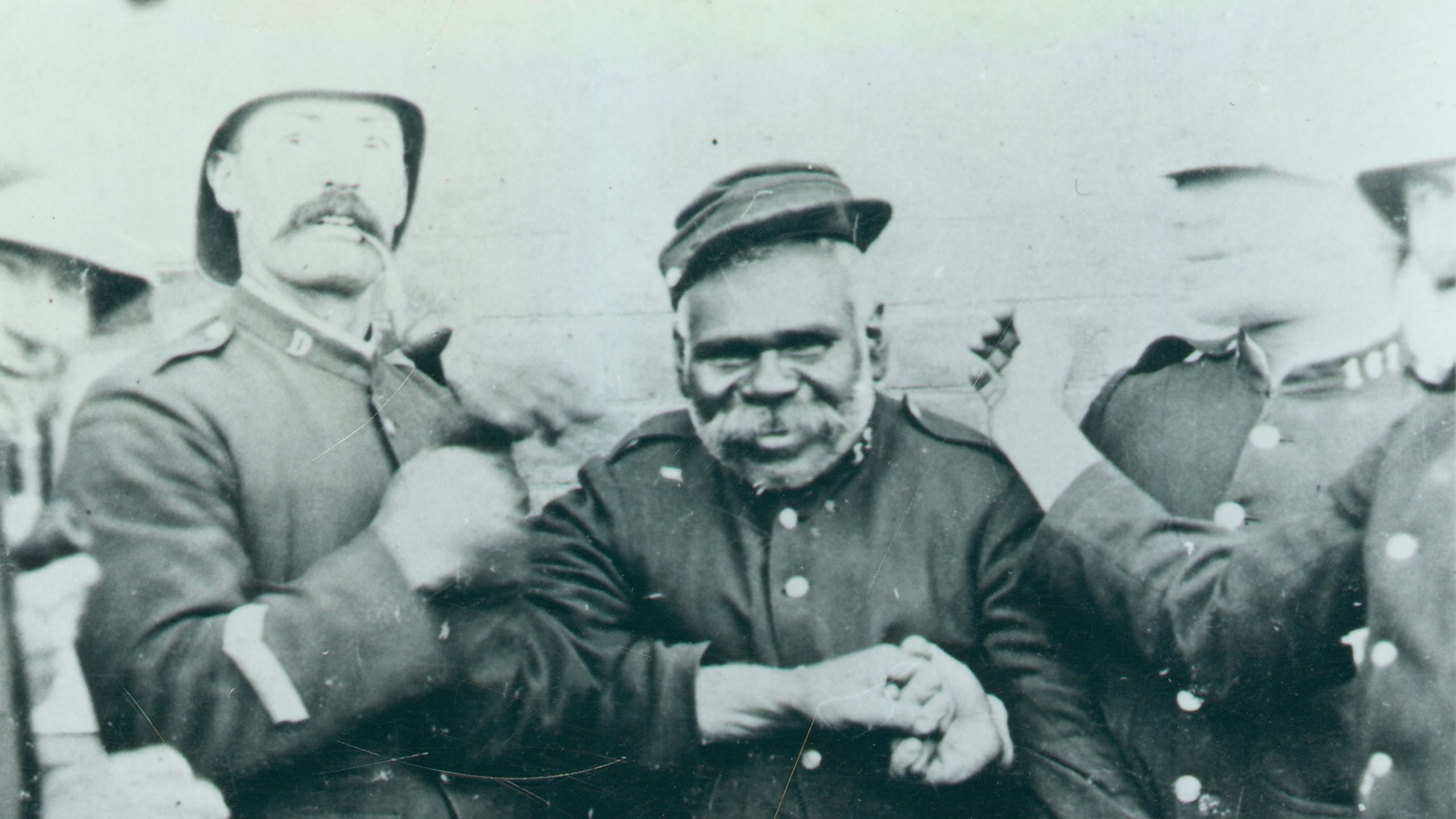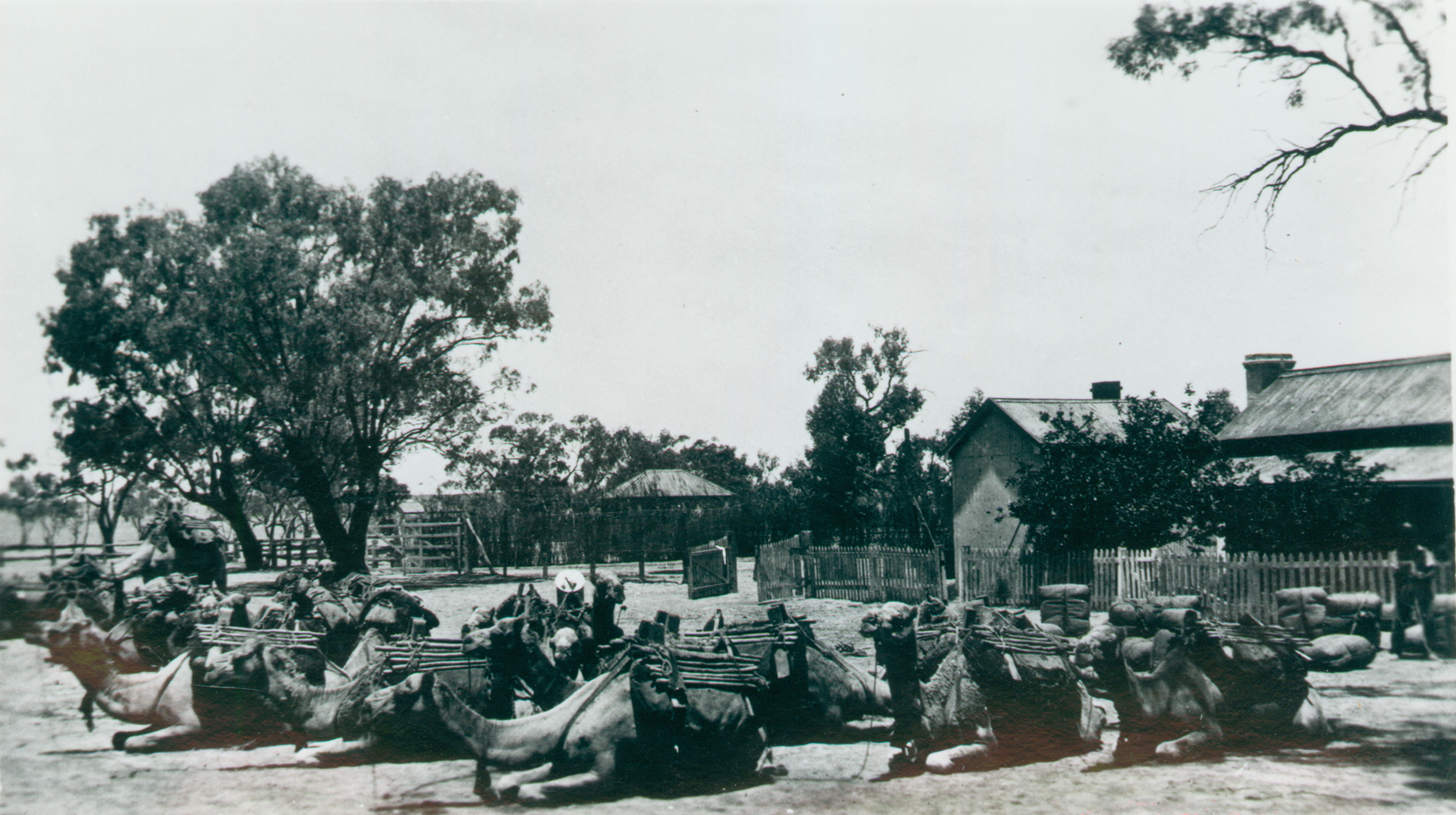Picturing Tracker Tommy
Aboriginal Police Work at Broken Hill
Aboriginal Police Tracker ‘Tommy’ worked in Broken Hill from the late 1890s-1910. His employment and skill as a tracker was renowned and widely reported in the press. Tommy’s police work also saw him employed at the Silverton Police Station, along with other Aboriginal trackers. Moreover, his time at Broken Hill coincided with a craze for collecting and sending postcards; he was pictured in at least one during the 1909 lockout. The postcard image is an important record of Tommy’s work, and the work of Aboriginal trackers more broadly, given the scant tangible evidence often left concerning Aboriginal workers.
Aboriginal Trackers and their knowledge of Country were vital to the colony’s police force, their ability to read the land and its markings made them indispensable in the apprehension of criminals, and the locating of stolen stock, goods and missing persons. Little is known about Tracker Tommy’s personal or cultural background but evidence of his work in The Barrier Miner credits him with finding lost sheep; apprehending three ‘lads’ who robbed an aviary of its canaries; and assisting in the arrest of a dishevelled woman of ample girth who was wandering the streets in ‘the costume of Lady Godiva’ after a Sunday drinking session.
The postcard featuring Tommy being held by two policemen was taken during the 1909 lockout by Joseph Brokenshire, a commercial photographer who has left an important record of this action at Broken Hill. It is perhaps impossible to know the precise context of the moment the image was captured, but Tommy appears to have resisted his photograph being taken.
A report in The Sydney Morning Herald dated February 12, 1909, suggests that Tommy was not happy with his work driving the police cab through the picket lines to the BHP and Block 10 mines. In another image of Tommy made during the same period – a formal portrait taken by photographer James Wooler – a different picture is presented.
Postcards were produced and posted in their millions in the years 1902-14, and although the subject matter of the Brokenshire Brothers’ postcard may seem odd to us now, they often featured current events. Several photographs of the 1909 industrial dispute were printed as postcards and sent home to Sydney by the officers who had been stationed in Broken Hill. An identical postcard to the one shown here depicting Tommy is held at the University of Wollongong Archives, indicating its distribution beyond Broken Hill. The newspapers of the time did not feature many photographs and postcards were a way of sharing every day events in much the same way we use Instagram now.




